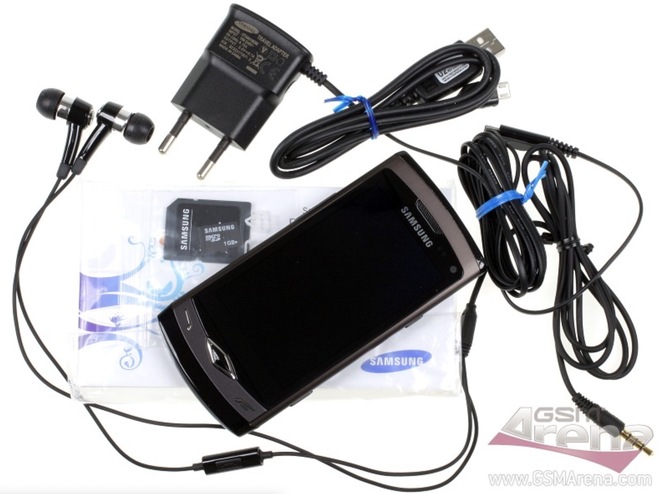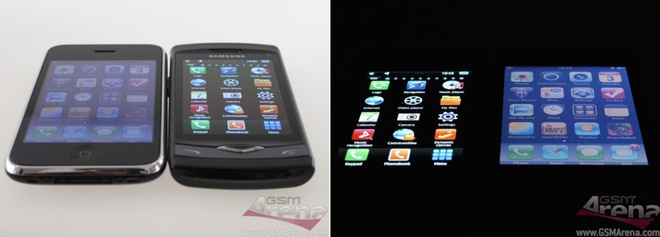Looking back at Samsung S8500 Wave: the first smartphone with a Super AMOLED screen and Bada OS
- Tram Ho
Do you know what was the first phone with a Super AMOLED display? You might think it was the first Galaxy S, but that’s not it, the spot belongs to the Samsung S8500 Wave, which is two months ahead of the Galaxy S.
The S8500 Wave runs Bada OS (which means “ocean” in Korean), which was the forerunner of Tizen, the operating system that ran on today’s Samsung smart TVs and the company’s day-to-day smartwatches, until the Galaxy line. Watch4, switch to Wear OS by Google.

The accessories that come with the product are too much by today’s standards
Let’s talk on the sidelines for a bit. Maemo is a Linux-based operating system for mobile devices developed by Nokia. Intel already has a similar system called Moblin. Then the two tech giants decided to combine their efforts into MeeGo (part of what makes the Nokia N9) great.
But then Nokia gave up Intel to pursue Windows Phone. So Intel and others – among them Samsung – started the Tizen project as a sequel to MeeGo. Samsung had its own Linux-based operating system at the time, Bada, which was eventually merged into Tizen in 2013. Samsung has been a major customer of Tizen ever since.
Back to the S8500 Wave. Apart from the operating system, it’s like a miniature Galaxy S. The S8500 Wave runs on the same Hummingbird chipset (1.0 GHz Cortex-A8 CPU), an early Samsung chip that predates the Exynos series. Both have the same 5 MP camera with autofocus and 720p video recording, and a 1,500 mAh battery.

S8500 Wave is a beautiful phone, also has a 3.5mm jack and a camera button
Wave’s screen is smaller, 3.3 inches compared to the Galaxy S (4.0 inches), despite having the same resolution – 480 x 800 px. Like on the Galaxy, this screen is protected by first-generation Gorilla Glass.

The screen of the S8500 Wave has a size of only 3.3 inches
And while there have been products with AMOLED screens before, this one is special. With no gap between the screen and the protective glass (this is part of what makes “Super” AMOLED), the entire interface seems to float on the surface of the glass. Of course, the display has vibrant colors and true blacks, you can clearly see the difference when compared to the iPhone:

The Wave and the Galaxy S may already be running different operating systems, but you probably won’t immediately notice – both come with TouchWiz, the user interface Samsung uses for most of its phones. (starting with basic touch phones). The hardware was similar enough that developers could bring Android to Wave, up until version 4.4 KitKat (2013). Even the official Galaxy S itself only supports up to 2.3 Gingerbread.
Samsung S8500 Wave Bada UI demo
For official Samsung software releases, Wave was updated to Bada OS 2.0 in late 2011 with a completely redesigned user interface and full multitasking. Bada 1.x is capable of multitasking, however, it restricts third-party applications to only run one application at a time (an energy-saving feature). Version 2.0 lifted that restriction.

Due to the same TouchWiz interface, Bada and Android on Samsung devices are very similar
Since it doesn’t run Android, Symbian, Window Mobile or any other pre-installed operating system, Bada needed an app store, and already has Samsung Apps. Initially, the store only had 60 apps (all free), although Samsung has promised to bring that number up to 100 by the time the phone launches.

Samsung Apps Store and App Switch Interface
As with Windows Phone, the lack of apps is a big problem. If your platform doesn’t have apps for major social networks, instant messaging apps, video streaming, and other popular services, it’s dead.
While Samsung still managed to release a number of other Wave phones (including the Wave II and Wave 3, along with lower models), Bada ended quickly in 2011, less than two years after its launch. .

Samsung S8600 Wave 3
Some time later, the Samsung Z series came out with the new Tizen OS, the successor to Bada. The smartphone operating system also came to an end quickly, with the Samsung Z launching in 2014 and the last Tizen phone, the Samsung Z3 Corporate edition, coming in mid-2016.
Of course, Tizen then continued to be used in Samsung smart TVs and smartwatches, but after years of trying, the company discovered that it didn’t really need an alternative smartphone operating system to Android.
TouchWiz is finally dead, as a result of Samsung’s excessive use of phone operating systems, it has switched to One UI – a real interface for Samsung smartphones.
Even Microsoft, Nokia’s once misguided partner, has learned the lesson that a good Android interface is worth more than a proprietary operating system. Both Samsung and Microsoft are now working with Google to roll out exciting new features to Android (especially for dual-screen and foldable phones).
Reference: GSMArena
Source : Genk
